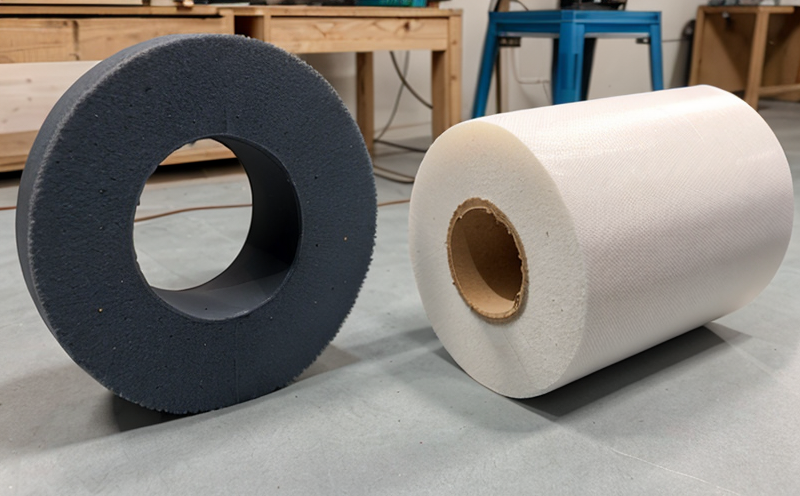ISO 13061 Mechanical Testing of Small Clear Specimens of Wood
The ISO 13061 standard provides a comprehensive framework for testing the mechanical properties of small clear specimens of wood. This method is particularly useful in assessing the strength and durability of various wood types used in furniture manufacturing, construction, and other applications requiring precise material quality assurance.
The test involves preparing small, clear samples of wood from larger pieces to ensure that they are free from defects such as knots, cracks, or decay. These specimens are then subjected to standardized mechanical tests designed to evaluate their resistance to various forces including bending, splitting, and shear. The results provide critical insights into the structural integrity of different wood species.
The testing process is meticulously controlled to ensure consistency across all samples, making it a reliable method for quality assurance in industries where material strength is paramount. Compliance with ISO 13061 helps manufacturers meet stringent international standards, thereby enhancing product reliability and consumer confidence.
This service is ideal for furniture designers, engineers, and procurement teams who need to ensure that the wood they select meets rigorous mechanical performance criteria. By leveraging this testing method, businesses can optimize their material choices, reduce waste, and improve overall product quality.
The ISO 13061 protocol ensures that all tests are conducted under controlled conditions, which minimizes variability in results. This consistency is crucial for industries where precision in measurements directly impacts the final product's performance. For instance, understanding how different wood types respond to mechanical stress helps in selecting the most suitable material for specific applications.
The method also supports research and development efforts by providing detailed data on various wood properties. Engineers can use these insights to innovate new designs or refine existing ones, ensuring that products are both functional and aesthetically pleasing. The standard's rigorous testing procedures help identify potential weaknesses in the materials early in the design process, allowing for timely adjustments.
Compliance with ISO 13061 is increasingly becoming a requirement across various sectors due to its reliability and objectivity. This ensures that products meet not only local but also international standards, broadening market opportunities for manufacturers who adhere to these guidelines.
The detailed reports generated from this testing method are invaluable tools for decision-makers in the furniture industry. They provide an objective basis for choosing materials based on their mechanical properties, helping companies stay competitive by offering high-quality products that meet global expectations.
Why It Matters
The importance of ISO 13061 mechanical testing cannot be overstated in the furniture manufacturing sector. Furniture pieces are subject to considerable stress during use, and understanding how wood specimens behave under different forces is crucial for ensuring product longevity.
- Precision in Material Selection: Ensures that only high-quality materials are used in production, reducing defects and increasing customer satisfaction.
- Enhanced Product Durability: Testing helps identify the most durable wood types suitable for long-lasting furniture items.
- Compliance with International Standards: Ensures that products meet global quality benchmarks, facilitating easier export and import processes.
The mechanical properties of wood are critical factors in determining the lifespan and performance of furniture. By using ISO 13061 testing, manufacturers can make informed decisions about material selection, leading to better-performing and more durable products.
Furthermore, this testing method supports sustainable practices by encouraging the use of well-tested materials that meet specific quality standards. This approach helps in reducing waste and promoting efficient resource utilization within the industry.
Why Choose This Test
- Rigorous Standardization: Adherence to ISO 13061 ensures that tests are conducted under controlled conditions, providing consistent and reliable results.
- Enhanced Product Quality: By identifying potential weaknesses early in the design process, this testing method helps improve product quality and performance.
- Global Recognition: Compliance with ISO standards is widely recognized and accepted internationally, enhancing marketability for furniture manufacturers.
- Cost-Effective Solutions: Early identification of material issues saves costs associated with rework or scrapped products.
The ISO 13061 mechanical testing method offers a robust framework for evaluating wood specimens' mechanical properties. This ensures that the chosen materials are suitable for various applications, enhancing product durability and performance. The standard's global acceptance also simplifies compliance processes, making it an attractive choice for furniture manufacturers.
Environmental and Sustainability Contributions
The ISO 13061 mechanical testing method plays a crucial role in promoting sustainable practices within the furniture industry. By ensuring that only high-quality wood specimens are used, this test helps reduce waste and promotes efficient resource utilization.
- Sustainable Sourcing: Encourages the use of well-tested materials sourced from responsible forestry practices.
- Eco-Friendly Products: Ensures that furniture products meet environmental standards, contributing to a greener planet.
The rigorous testing process also supports sustainable development by helping manufacturers identify and implement measures that minimize their environmental footprint. By selecting materials based on mechanical performance data provided by ISO 13061 tests, companies can contribute positively to the environment while enhancing product quality and durability.
Furthermore, compliance with this standard fosters innovation in material science and engineering, encouraging the development of new sustainable solutions for furniture manufacturing. This shift towards more environmentally friendly practices not only benefits the industry but also contributes significantly to global sustainability goals.





